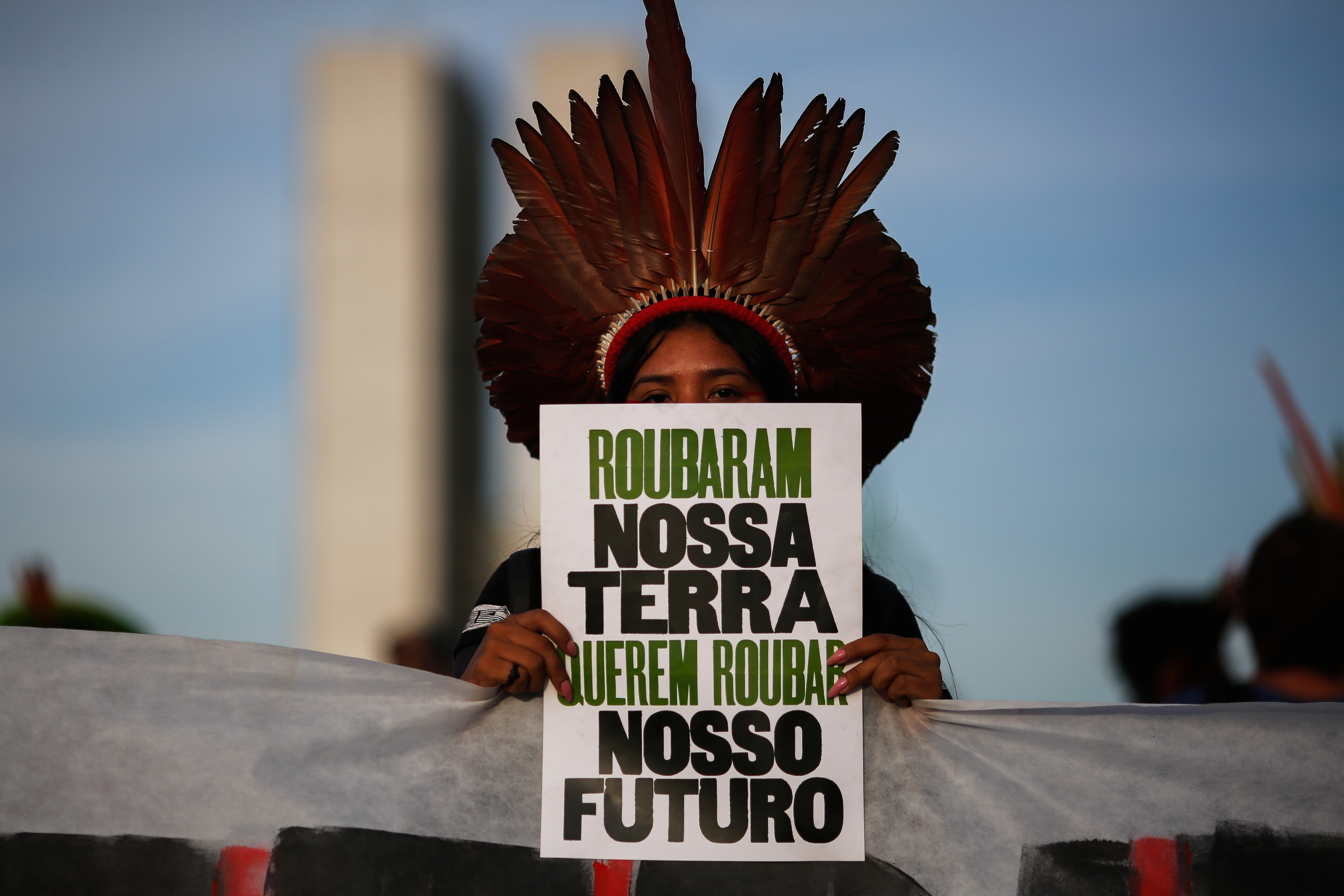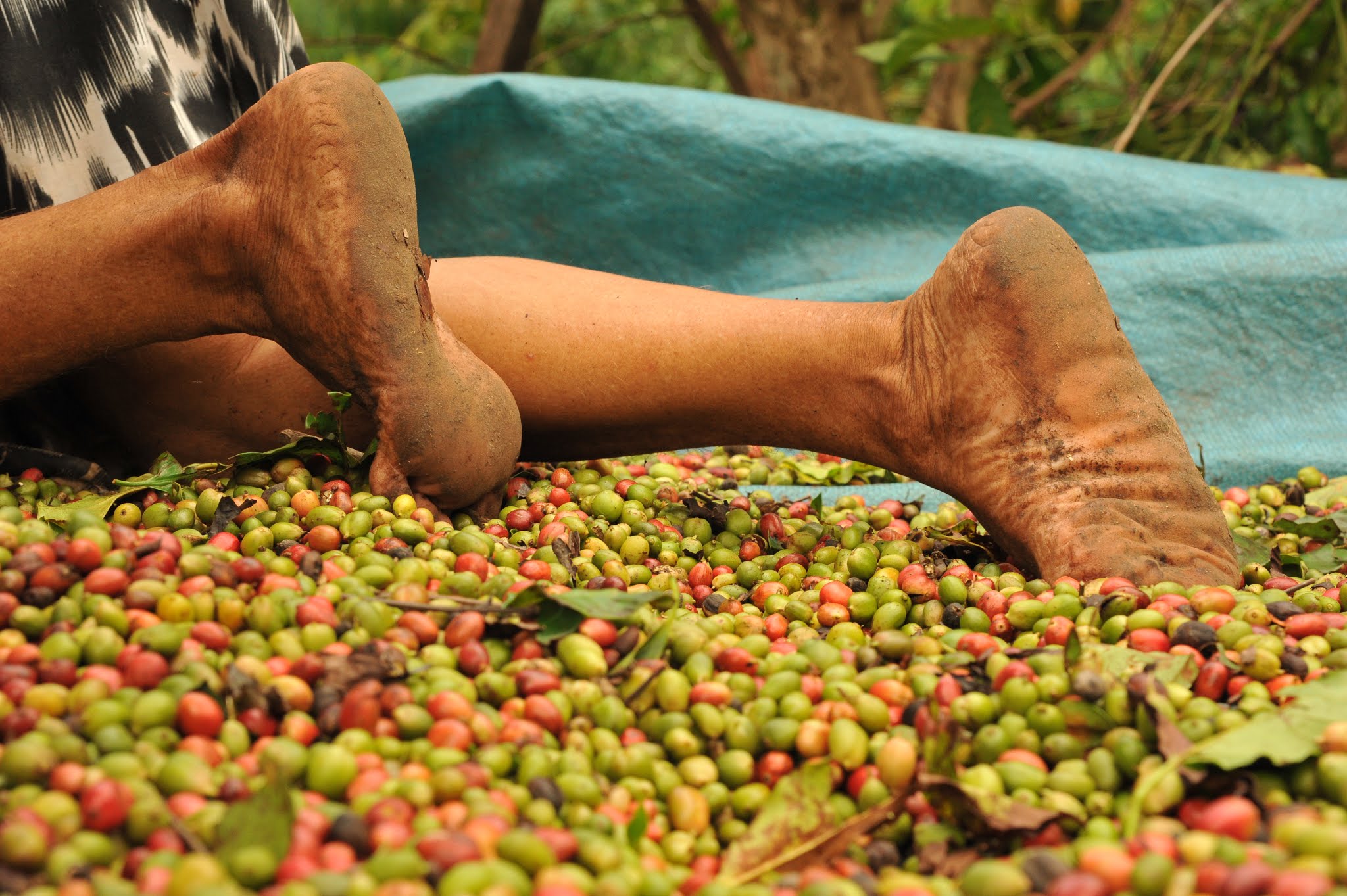Time Frame: understand the difference between the vote in the Supreme Court and in Congress
Discussions on the thesis that limits the constitutional right to land raises the debate on the importance of indigenous peoples to Brazil
 Indígena durante manifestação contra o chamado Marco temporal em frente ao Congresso Nacional em maio de 2023. (Foto de Sergio Lima / AFP)
Indígena durante manifestação contra o chamado Marco temporal em frente ao Congresso Nacional em maio de 2023. (Foto de Sergio Lima / AFP)
This week, the Supreme Court is set to resume its judgment of the Extraordinary Appeal No. 1,017,365 that will determine whether or not demarcations of indigenous lands should follow the so-called “Time Frame” thesis. The matter is also being addressed through a bill that is pending in the Federal Senate.
Below we explain the main points of the legislative bill and the Supreme Court judgment:
What is the time frame?
The time frame is a thesis claiming that indigenous peoples will only be entitled to land that was in their possession on October 5, 1988, the date of the promulgation of the Brazilian Constitution, while ignoring the historical violations suffered by these peoples over the years.
The thesis is perverse because it legalizes and legitimizes the violence to which indigenous peoples were subjected until the promulgation of the Constitution of 1988, especially during the military dictatorship. Furthermore, it also ignores the fact that until 1988 indigenous peoples were under the legal protection of the State and did not have the autonomy to fight, legally, for their rights.
What is at stake in the Supreme Court?
The Supreme Court is judging Special Appeal No. 1,017,365, which is a land repossession claim filed by the Santa Catarina State Environment Institute against the National Indian Foundation (FUNAI) and indigenous peoples from the Xokleng tribe. In the judgment, the justices will decide whether or not legal cases involving demarcations of indigenous lands should follow the time frame thesis.
In a decision on April 11, 2019, a full bench of the Supreme Court unanimously recognized the “general repercussion” of Special Appeal No. 1,017,365. This means that whatever is decided in this case will serve as a precedent for all cases involving indigenous lands at all levels of the Judiciary.
There are many land demarcation cases and ownership disputes involving indigenous lands that are currently in the courts. There are also many legislative measures that attempt to remove or dilute the constitutional rights of indigenous peoples. By accepting the “general repercussion” status, the court also recognizes that there is a need for clarification on the matter.
And in the National Congress?
In the National Congress, the matter is pending in the form of Bill No. 2903 that proposes to transform the time frame thesis into law. In May 2023, civil society organizations presented the risks of the passage of the bill to the UN, warning about the unconstitutionality of the proposed legislation and the unfeasibility of the demarcation of indigenous lands. According to the organizations, the bill contains four critical points: the unconstitutionality of the bill; how it prevents the demarcation of indigenous lands; contempt for consultation and free, prior and informed consent; and, finally, discrepancies with the efforts to protect the environment and tackle climate change.
What do international bodies say?
On separate occasions, the UN and OAS both spoke out against the time frame thesis. Francisco Cali Tzay, UN Special Rapporteur on the rights of indigenous peoples, said “the acceptance of a doctrine of the time frame thesis would lead to significant denial of justice for many indigenous peoples who are seeking recognition of their traditional land rights. The Constitution holds that indigenous peoples have the right to adverse possession of the lands they have traditionally lived on”.
The IACHR, meanwhile, has also expressed its concern over the time frame thesis and warned that it could have a serious impact on the collective land rights of indigenous and tribal peoples of Brazil.
The Commission also repeated that the application of the time frame thesis is in contravention of international and inter-American human rights norms, specifically the American Convention on Human Rights and the American Declaration on the Rights of Indigenous Peoples. Most notably, because it does not take into consideration the numerous cases in which indigenous people were forcibly removed from their territories, often using extreme violence, which is why they were not living on their land in 1988.
What role do indigenous lands play in environmental preservation?
Although the demarcation of indigenous lands is a right guaranteed by the Constitution of 1988, native peoples still face difficulties getting their rights recognized.
According to the IBGE statistics institute, agricultural land occupied 41% of the national territory in 2017, with an average size of 69 hectares per owner. Indigenous peoples, meanwhile, whose population is 896,917 according to the latest Census of 2010, have only demarcated 13.8% of the national territory. The world average is 15%, according to research published in the journal “Nature Sustainability”.
According to a report by MapBiomas, indigenous lands are largely responsible for guaranteeing the protection of Brazil’s biomes. Only 1.6% of all the deforestation that has occurred over the past thirty years was registered in these areas (territories either demarcated or awaiting demarcation). On the other hand, private areas were responsible for 68% of the loss of native vegetation.
The conservation of large areas of vegetation on Indigenous Lands ensures the maintenance of essential ecosystem services, such as climate regulation and rainfall, maintenance of groundwater sources, soil stability and fertility, and pest and disease control, among others. In addition to the benefits for life on Earth, these functions are also essential for agriculture and livestock, and they also ensure the maintenance of industry and well-being in cities.


